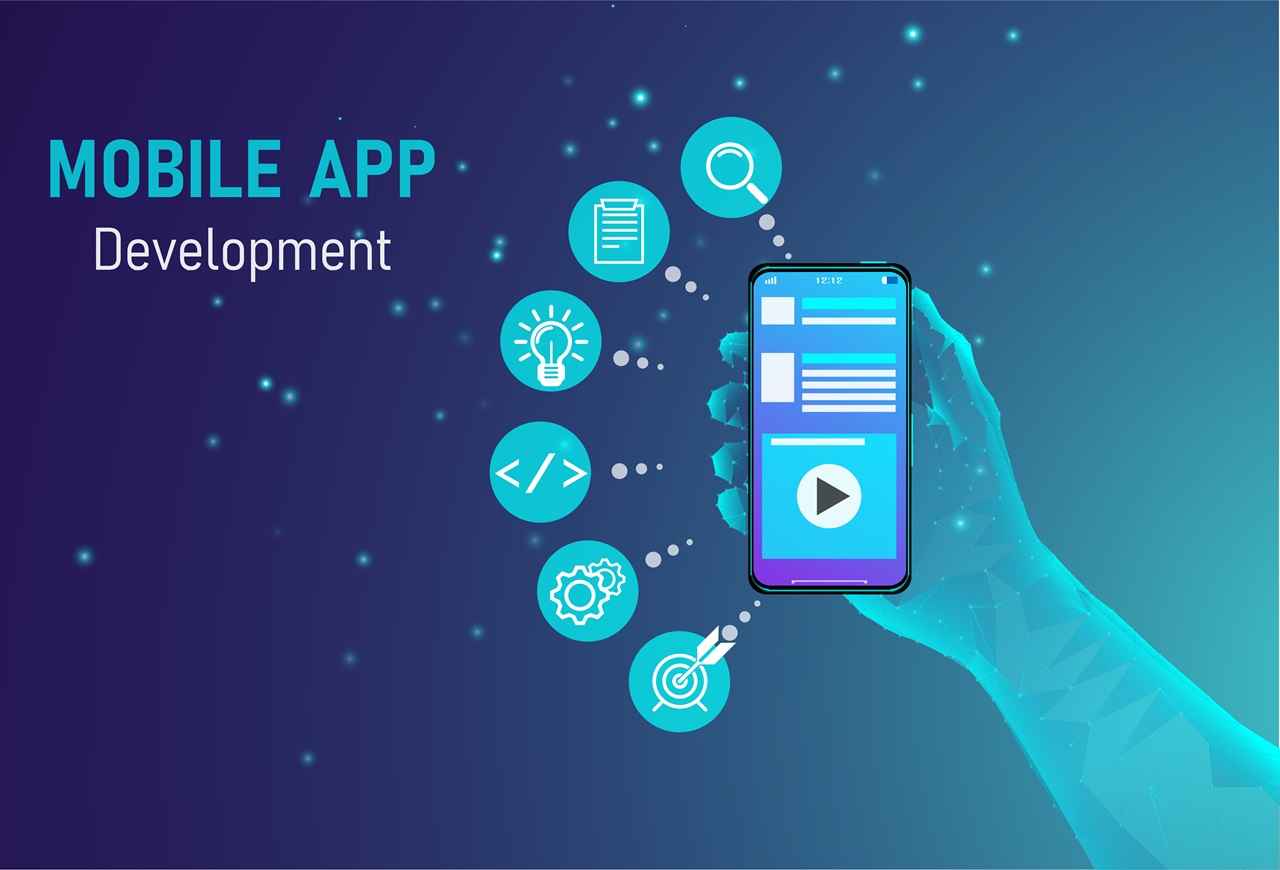
The current digital environment now sees mobile apps as a primary mode of communication, shopping, learning, and entertainment. With billions of users globally, mobile apps are no longer a supplementary arm for businesses to promote anything; instead, they have become the main engine to drive the presence of brands, to keep engaging with users every other day, and to sell products. The beauty behind mobile apps is that one can have an e-commerce store, gallery, sports apps, and many other things, and hence can still be around their customers because that is where they truly spend most of their time—on their mobile phones.
Mobile apps present a direct, convenient, personalized engagement channel with the client. All this is accounted for by notifications, or by location tracking, and finally by providing a seamless, explorable user experience for improving user engagement and retention. Adopting mobile technology seems like a way to give oneself a competitive advantage and then to better understand one’s market and, in the end, to offer tailor-made solutions efficiently.
The Core Benefits of Having a Mobile App
There are a lot of advantages that also come with having a mobile app. Increasing customer engagement is a major one. To a great extent, mobile applications achieve what could never be done via websites or email, that is, instant and one-time exclusive interaction using push notifications, in-app messaging notifications, and offline functionality.
Another advantage is that it magnifies brand retention and visibility. A beautifully designed app, complete with an extraordinary interface, bolsters the brand image. The icon on a user’s screen symbolizes the brand and becomes a permanent reminder of the brand, and hence also increases customer loyalty.
Below the benefits come the operational streamlining from mobile apps. Linking in with other systems, apps neatly manage the roundup, including CRM, inventory platforms, or ERPs, for ease and procedure. Organizations will reach out with live support as a feature of mobile apps, keep an eye on user behaviors, and generate enough data to lead an informed decision-making process.
Native, Cross-Platform, and Hybrid: Choosing the Right Development Path
One of the key decisions that companies face once they choose to create an app is the choice of the development path.
Native apps are OS-specific, that is, either Android or iOS, and, respectively, are developed with native languages. Performance and access to tailor-made device functionalities are the best, but developing an app for two different versions increases development costs significantly and results in a delayed time to market.
Cross-platform SDKs having ready-to-use UI libraries like Flutter and React Native allow developers to code once and deploy smoothly on both Android and iOS. This results in a faster time to market, saves costs, and assures the app’s performance of near-native apps.
Hybrid apps are a different breed altogether. A hybrid application is a blend of web development and native applications. Their operation is built on web technologies like HTML, CSS, and JavaScript that are enclosed within a native container. Builders go for this option to hack deliverance speed and usually lose performance vis-à-vis native or cross-platform approaches.
The right choice will largely depend on the above factors, including complexity, timeline, budget, and maybe more on platform-specific features that need to be integrated with the solution.
Key Stages in Mobile App Development
Mobile app development forms a systematic procedure that often remains divided into stages, with each phase focusing on delivering high-quality end products in line with business purposes and users’ expectations.
Discovery and planning are stages one must not skip. It signals probably every other aspect of designing elegant economies; for example, defining the purpose of the app, targeting the audience, casting a look at the competition, and drafting what the major functionalities stand for. A technical roadmap and timeline both fit into this stage.
After the now-formulated strategy, the next stage involves UI/UX design. Here, designers draft interactive wireframes, simulating a mock-up of the screen and interaction designs. This ensures that the app remains not only functional but also intuitive and visually appealing.
The development phase comes naturally towards creation. This generally comprises front-end (client-side) and back-end (server-side) development. The databases are constructed; the APIs will be integrated, and the security protocols will be established. Agile methodologies are stressed for continuous feedback and improvement throughout development.
Testing, before the launch of the application, will prove to be a decisive factor. QA will put their best into running functional, performance, usability, and security tests, ensuring that the app will run flawlessly on each possible device and in every possible scenario. This stage can nullify any bugs tainting the user experience or the reputation of the brand.
Finally, the deployment phase involves submitting the app to the respective app stores. Developers have to ensure compliance with the guidelines of platforms like the Apple App Store or Google Play. Beyond that, businesses monitor app performance and gather feedback from users for further updates post-launch.
Attributes of Mobile Apps that Set Them Apart
While every app has something distinct about it, the successful ones often share a few attributes. For one, they are characterized by smooth and quick user interfaces; users upon first contact expect their apps to load and navigate easily and respond immediately to their commands.
Offline workability is another plus in any app. A sustained experience, even in the absence of the internet, should be an option for a substantial part of action or information delivery. Inferences are drawn here regarding the reliability for the customers’ trust.
Finally, just as there is no room for argument in matters of security these days, an app must provide security right around the corner. This could be ensured by mechanisms such as password methods, top encryption, or maybe biometrics.
Also, an app should have some sort of analytics and user feedback incorporated to help make it possible to digest data to see how the customers are using the app, point out their warts (pain points), and feed them back into continuous improvements.
Other Good-to-Have Pieces
Third-party integrations (payments, social platforms, to name a few) are invaluable assets. Real-time notifications are a great feature because (in the case of an email app), the second an email hits the user’s inbox, the app can give them a buzz.
Custom Mobile App Solutions
Although some simple categories of mobile application software can be built using common templates or drag-and-drop app builders, these tools fail to suffice for businesses with unique needs. Custom applications are tailor-made to fit specific business workflows, customer journeys, and even branding needs, hence benefiting from design, functionality, and integration into existing systems.
A customized app further allows you to scale, grow, and evolve to the height of new enterprise requirements. The mobile app has all bases covered with full integration, security compliance requirements, as well as third-party APIs that would appear within organizational goals.
This is where companies often turn to providers of custom mobile app development services to ensure their product not only looks great but also performs reliably and meets the unique challenges of their industry.
Maintenance and Scalability of the Mobile App Beyond Its Launch
The job doesn’t end after the app is launched; operations, maintenance, and scalability ensure its success. Operating systems get updated and devices evolve constantly; hence, the app has to go through a cycle of tests and updates to stay compatible.
The expectations users have, since continually changing, require a few engagement strategies based on constant updates plus feedback that promise to maintain loyalty and satisfaction throughout. Keeping abreast of new features to fix bugs without procrastination to make an app stay relevant and competitive, can help in increasing its success.
Firebase, Mixpanel, and AppDynamics are some of the tools that monitor user behavior, crash reports, and usage trends. All these details help devs toward better planning and resource assignment.







